Discovering a bird trapped in your fireplace can be a heart-wrenching experience for both you and the distressed avian visitor.
However, fear not! With the right approach and a gentle touch, you can safely and effectively free the bird from its predicament, ensuring a happy ending for everyone involved.
In this guide, we will walk you through the steps to handle this delicate situation with care and compassion. You’ll learn how to get the bird out of the fireplace.
Whether the bird is a common house sparrow or a majestic chimney swift, the methods we will outline will minimize stress for the bird and reduce the risk of injury.
Before attempting any rescue, it’s crucial to remain calm and patient. By following our expert advice, you can successfully release the trapped bird and give it a second chance to soar the skies.
Let’s get started on this journey to reunite your feathered friend with the great outdoors.
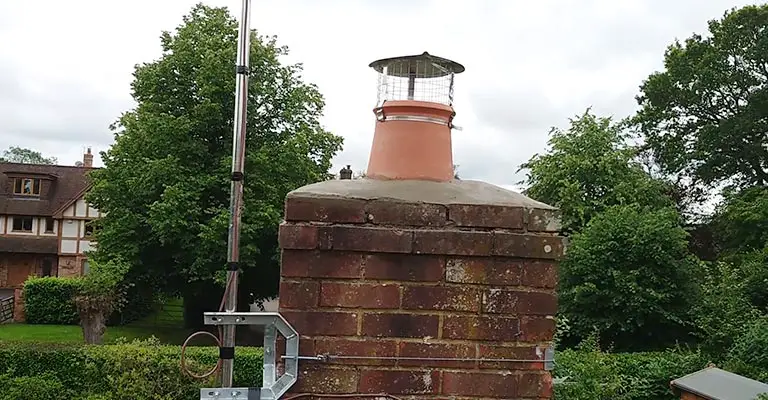
How to Get Bird Out of Fireplace?
Rescuing a bird trapped in your fireplace can be a delicate and challenging task, but with patience and the right approach, you can safely free the bird and ensure its well-being. This step-by-step guide will walk you through the process of getting a bird out of your fireplace.
Step 1: Assess the Situation
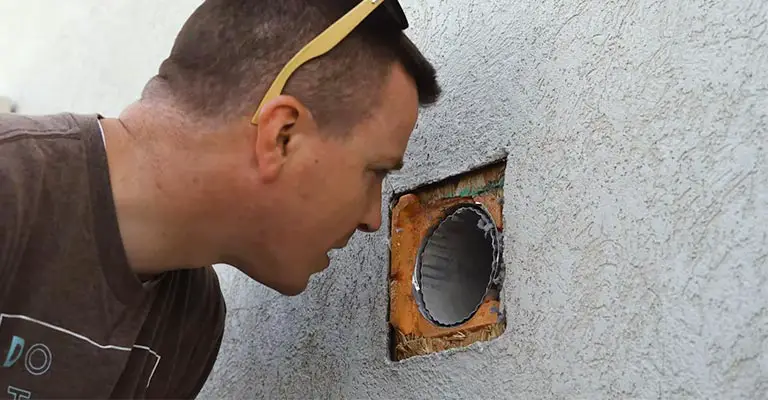
The first step is to carefully assess the situation. Before taking any action, determine the following:
Take a moment to identify the species of the bird, if possible. Different birds may react differently to rescue attempts. Observe the bird’s condition. Is it injured, scared, or calm? This will help you decide on the best approach.
Examine the design of your fireplace. Are there any barriers, such as a glass door, that need to be removed or opened for access?
Step 2: Prepare Your Tools
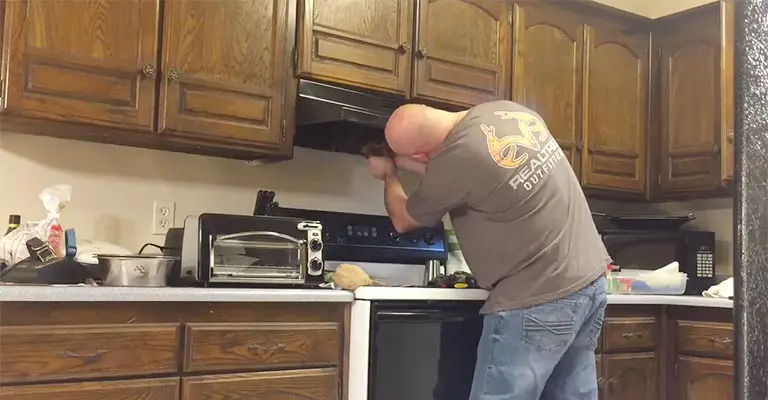
Gathering the right tools is essential for a successful rescue. Here’s what you’ll need:
This will be used to capture the bird safely. You’ll need this to gently guide the bird towards the opening. Wear gloves to protect your hands, as some birds may bite or scratch when cornered.
Dim the lights in the room to reduce stress for the bird, making it more likely to move towards the opening.
Step 3: Clear the Room
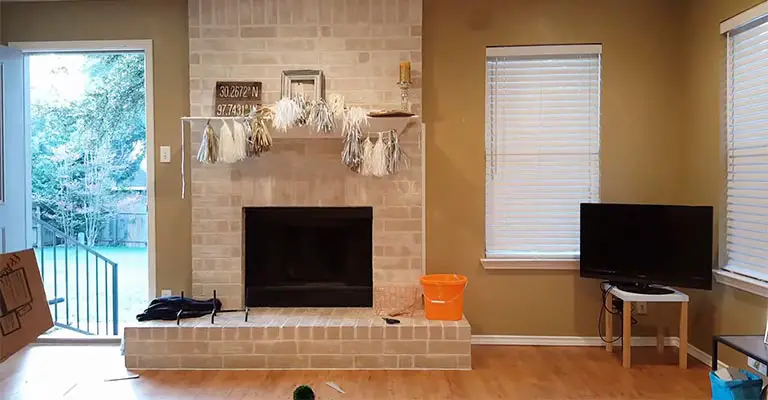
To make the rescue process easier, clear the room of any potential hazards. This includes pets, children, and any clutter that might startle or block the bird as it attempts to escape.
Step 4: Open the Fireplace Damper or Door
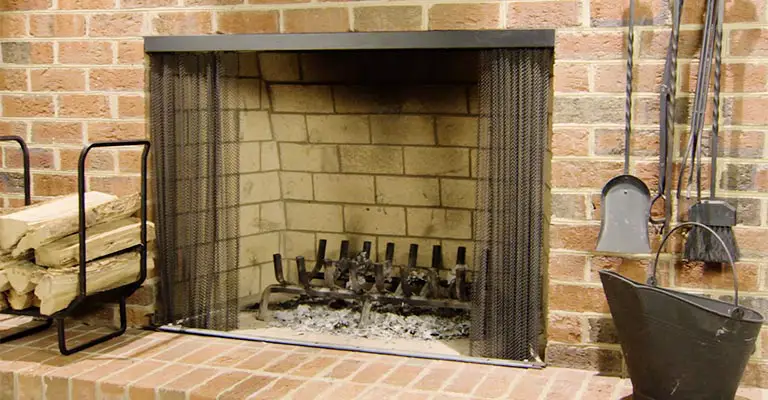
If you have a damper, open it to create a larger escape route for the bird. In cases where your fireplace has a glass door, open it as wide as possible to create a clear path for the bird.
Approach the fireplace with calm and caution. Move slowly and speak softly to avoid frightening the bird further. Keep in mind that the bird is already stressed, and sudden movements or loud noises can make the situation worse.
Step 5: Capture the Bird
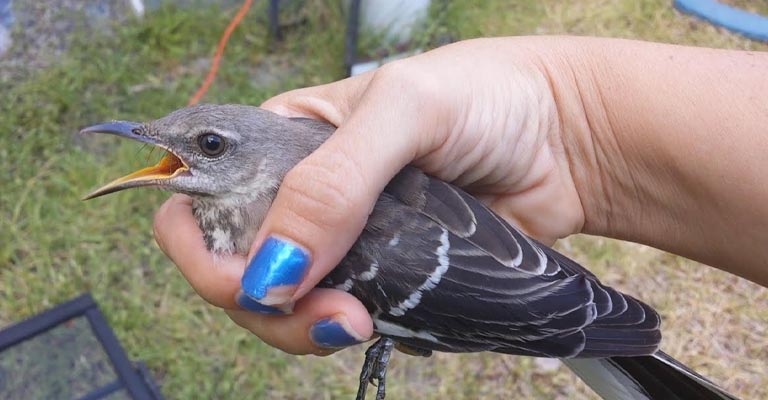
Using a thick towel or cloth, approach the bird carefully. If the bird is calm and perched on a relatively low surface, you might be able to gently throw the cloth over it to capture it.
If the bird is higher up or flying around, try to guide it toward a lower area using cardboard or a flat surface.
Step 6: Safely Contain the Bird
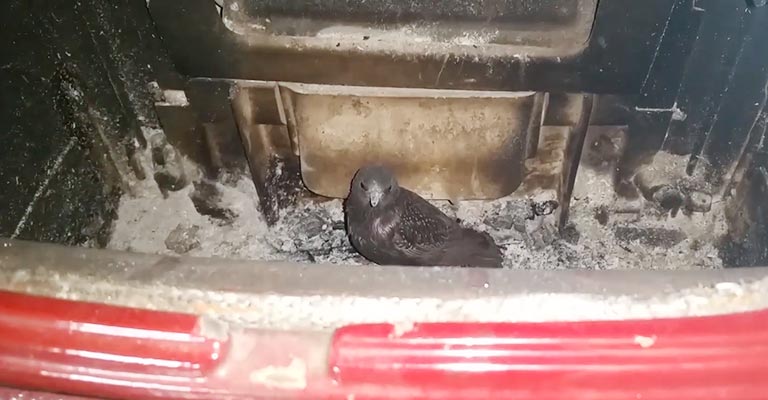
Once the bird is in the cloth, gently wrap it around the bird’s body. Be careful not to squeeze too tightly, as you don’t want to harm the bird. Make sure the bird’s head is secured within the cloth to prevent any pecks or bites.
With the bird safely contained, carefully carry it outside. Once outdoors, gently release the bird by slowly unwrapping the cloth. Allow the bird to fly away at its own pace. Do not throw it into the air; instead, give it time to recover and regain its strength before taking off.
Step 7: Prevent Future Incidents
After successfully rescuing the bird, take steps to prevent future incidents. Install a chimney cap or screen to keep birds out of the chimney in the first place.
Ensure that your fireplace damper or door is closed when not in use. Regularly inspect your fireplace for any potential entry points and seal them if necessary.
After releasing the bird, keep an eye on it from a distance. Make sure it can fly and is not injured. If you notice any signs of distress or injury, consider contacting a local wildlife rescue organization for further assistance.
What Types of Birds Are Most Likely to Get into Fireplaces?
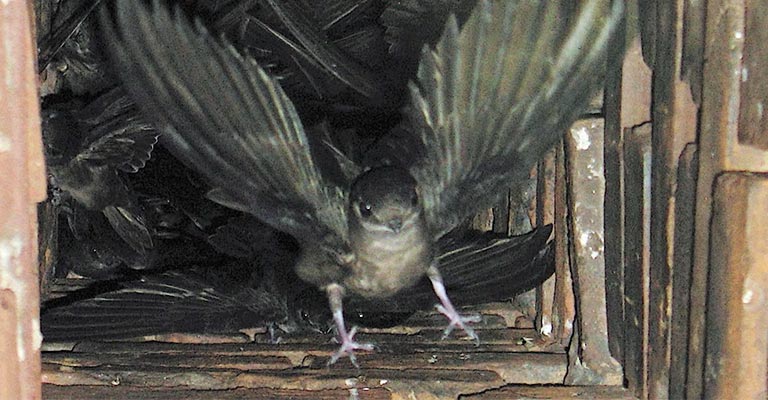
Several species of birds may find themselves trapped in chimneys or fireplaces due to their design and the bird’s behavior. These situations often occur by accident, and understanding the types of birds that are most likely to get into fireplaces can help you take preventive measures.
Here’s a look at the types of birds commonly involved in such incidents:
Chimney Swifts (Chaetura pelagica)
Chimney swifts are named for their propensity to roost and nest in chimneys. They are small, insect-eating birds with slender bodies and long wings.
Chimney swifts have unique adaptations that allow them to cling to vertical surfaces, making chimneys an attractive nesting site. They are a common species to find stuck in chimneys, especially during the breeding season.
European Starlings (Sturnus vulgaris)
European starlings are notorious for taking up residence in chimneys. They are medium-sized, dark birds with iridescent plumage.
Starlings often nest in cavities, and chimneys provide a sheltered environment that resembles natural nesting sites like tree hollows. Their nesting habits can lead to blockages and fires if not addressed promptly.
House Sparrows (Passer domesticus)
House sparrows are small, brownish birds known for their adaptability to urban environments. They frequently explore structures and may accidentally fall into chimneys while looking for shelter or food.
Their small size can make them challenging to spot, increasing the likelihood of a trapped sparrow in your fireplace.
Swallows
Various swallow species, including barn swallows and cliff swallows, are prone to getting stuck in chimneys.
These birds are skilled flyers but may misjudge a chimney’s narrow opening as they swoop in for a closer look or attempt to nest. Swallows are recognized by their distinctive forked tails.
Nuthatches
Nuthatches are small, agile birds known for their ability to move headfirst down tree trunks. In some cases, they may inadvertently enter chimneys while exploring.
While nuthatches are not as common in chimneys as swifts or starlings, it’s still possible to find them in these predicaments.
Robins
Robins are familiar birds with bright orange breasts. While they are typically associated with nesting in trees, they may occasionally find themselves stuck in chimneys if they explore them out of curiosity.
Woodpeckers
Woodpeckers are not often found in chimneys, but their natural curiosity can lead them to unusual places. If you have a chimney without a cap, it’s possible that a woodpecker may investigate it and become trapped.
Various small bird species may accidentally enter chimneys, particularly during their migratory journeys or when searching for a warm, sheltered spot.
It’s essential to consider the local bird species in your region to determine which birds might be more likely to encounter your fireplace.
Preventing Birds from Entering Fireplaces
Preventing birds from entering your fireplace is crucial for their safety and your peace of mind. Here are some effective measures to keep birds out:
Install a Chimney Cap
Chimney caps are designed to keep birds, as well as other wildlife, out of your chimney. They are made of wire mesh or metal and cover the chimney’s opening, allowing smoke to escape while preventing animals from entering.
Regularly inspect and maintain your chimney cap to ensure it remains secure and functional.
Close the Fireplace Damper
If you have a fireplace with a damper, make sure to keep it closed when the fireplace is not in use. An open damper provides easy access for birds and other animals.
Keep the Fireplace Clean
Remove any debris, nests, or twigs from your fireplace regularly. Birds may be attracted to existing materials in the chimney, which can lead to further problems.
You can place visual deterrents near your chimney, such as reflective objects or motion-activated lights. These can discourage birds from getting too close to the fireplace.
Schedule a Chimney Inspection
Hiring a professional chimney sweep to inspect and clean your chimney regularly can help identify potential entry points for birds and ensure your fireplace is safe and secure.
If there are cracks or openings in your chimney structure, repair them promptly to prevent birds from entering. Small openings can be inviting to nesting birds.
FAQs
How do I know if there’s a bird in my fireplace?
You may hear fluttering or chirping sounds coming from the fireplace, or you might see a bird inside if it’s visible through the opening.
What should I do if I find a bird in my fireplace at night?
If you discover a bird in your fireplace at night, you should follow the same steps outlined in the guide to safely rescue it.
Are there any risks associated with birds in chimneys or fireplaces?
Yes, there are potential risks, such as the risk of a bird getting injured or trapped, or even starting a fire if it builds a nest and blocks the chimney.
How can I bird-proof my fireplace if I don’t use it often?
If you have a fireplace that you rarely use, it’s a good idea to install a chimney cap. This not only keeps birds out but also prevents debris, rain, and animals from entering your chimney, providing all-around protection.
What do I do if I’m unable to rescue the bird on my own?
If you’re unable to rescue the bird successfully or if it appears injured, it’s best to contact a local wildlife rescue or rehabilitation organization.
Conclusion
Rescuing a bird from your fireplace is a rewarding act of kindness that can make a significant difference in the life of a vulnerable creature.
By following the steps outlined in this guide, you can ensure a safe and humane rescue, allowing the bird to once again experience the freedom of the open skies.
Remember, patience and gentle handling are key during this process. It’s important to approach the situation with empathy and understanding for the bird’s distress.
Once the bird is safely outside, take a moment to watch it take flight, and feel the satisfaction of knowing that you’ve played a part in preserving nature’s beauty.
Additionally, consider taking measures to prevent future incidents by installing a fireplace screen or chimney cap. Your proactive efforts will not only safeguard your feathered friends but also create a safer and more peaceful environment for both you and the local wildlife.